In the history of video games, everything has a beginning, an origin, a reason. The human mind and its inventions, no matter how creative it may seem to us, are mainly based on associations, links and improvements of the present. This is how technology has evolved over the centuries and this is how it happened with video games, a new entertainment industry which, in its beginnings, only a few visionaries knew how to glimpse, they are the true fathers of video games.
In this article, at Infoconsolas we are going to fully delve into the History of Video Games with Capital Letters, the origins of video games, where they come from, the machines that laid the foundations and how from military experiments in the mid-20th century, we have gone to enjoy one of the leisure activities that provide the most happiness to all its fans, video games.
Index of the History of video games, the beginnings
- Origins of video games, the lyrics are not exact.
We expose the lack of consensus on key questions such as who was the creator of video games, what was the first video game. - The forerunners of video games.
Military advances and World War II in the origins of video games. - Cathode ray tube amusement device.
Was a missile simulator the first video game? - Ferranti Nimrod Digital Computer.
The first computer designed to play, the beginning of the man-machine conflict. Video game or electronic game? - OXO.
The first video game in history as we consider them today. - Tennis for Two.
From the Manhattan Project and the atomic bomb to what is considered by many to be the first video game in history. - Spacewar and PDP-1.
Steve Russell, MIT, universities, supercomputers, spaceships, and hyperspace. It gets interesting. - End of the 60’s, the road splits in the History of Videogames.From laboratories, scientists and mathematicians to commercial video games as we know them today.
- Galaxy Game, the pioneers.
The first arcade games, creativity and innovation in the absence of commercial vision. - Computer Space.
Nolan Bushnell, the first video game entrepreneur and founder of Atari appears on the scene. - Ralph H. Baer, the father of video games.
The inventor of the first console in history and holder of the video game patent. - FAQ History of video games, the beginnings.
Questions and answers from the beginning of video games.
Before the Atari Pong, before the Magnavox Oddysey, in the history of video games there is an unknown era for most players, a period barely studied in comparison with the different generations of video games, of which until a few years ago we barely had information. As you can imagine, this time is in turn one of the most important: The beginnings of video games.
One of the main reasons that encouraged us to create Infoconsolas.com, “a couple” of years ago (in 2004), was the scarcity of contrasted information in Spanish about consoles and retro video games that we can find on the internet compared to our English and American colleagues. If we looked back in time, the history of video games, things got even more complicated:
If we search the internet for information about the origins of video games, we will witness a whole assortment of websites in which the origins of video games are located in different periods of time and with very varied machines or even video game consoles, some are correct but obviously , others not. On the other hand, on some of these websites we can see how, in just a few 200-word paragraphs, we go from the year 1958 to Nintendo’s NES, something that mainly occurs on non-specialized but well-positioned websites. And on the other hand, we also find hundreds of interesting monothematic websites of specific machines from the mid-20th century, lost in the vastness of the Internet, far from the top search positions.
Given this panorama, at Infoconsolas we venture to shed a little light on this very interesting but little-known period, unifying and outlining all this information, so that you can have a clear idea of who we owe everything we have today and which It was the succession of events that led to our beloved hobby. As always, we will try to give you a global vision, and not just an exposition of data, since we consider that it is just as important to know on what date the first video game was created as why, how it was created and its background and context.
Origins of video games, the lyrics are not exact
The first thing we want to clarify is the large number of contrary opinions and statements that hover in various aspects such as: who was the creator of video games, what was the first video game or even what is the strict definition of “video game”. There is such a diversity of opinions of celebrities in the world of video games, that from Infoconsolas.com we will limit ourselves to giving verified information of the facts and data, and a personal opinion based on our experience, without the intention of turning it into an absolute truth but arguing and opposing it against other ideas that, in our opinion, are erroneous.
This does not mean that we are not going to solve the aforementioned doubts, but as we will see, there is no “absolute first”, but various works and characters that complement each other, giving shape to what we now consider videogames, history is not a Exact science gentlemen, and what we are dealing with today is the history of video games.
The forerunners of video games
Consoles dating back to the 4th century BC have been found. C. in the French region of… ya ya ya, it was a joke, that the issue was becoming very serious. Let us begin:
Simply, to understand the mind of those visionaries, it is necessary to know the circumstances that surrounded them, that is, the 2nd World War. Like most wars throughout history, the Second World War was -leaving aside all its harshness and tragedy- an advance in many aspects of science. In times of war and in the years that precede them, nations invest extra money and resources than usual for weapons development or other factors, which can put them one step ahead of the enemy, be it medicine, genetics or the search for new metal alloys to have more resistant swords and shields a couple of millennia ago for example.
It is not surprising that it was during the 2nd World War when some new devices, previously made up of valves and lamps intended for calculations, suffered a spectacular advance for purposes as diverse as, for example, the Colossus, a British computer created to decipher encrypted messages from the Germans, which you can see in the image below. In those years the first computers were created, which were evolving from mechanics to digital electronics, laying the foundations for the history of video games.
After the end of WWII, scientists and mathematicians had made great advances in the field of computers, they were discovering their multiple possibilities, this added to the beginning of a cold war and the consequent interest by the different governments in maintaining the advantage before the enemy, It was a new push for computers.
That was the breeding ground for video games, it is clear that without a computer, there are no video games. In those years (late 40’s) computers were big machines with hundreds of indicators and buttons, they took up entire rooms, they cost millions of dollars (for the time) and there was no established hardware or software standard.
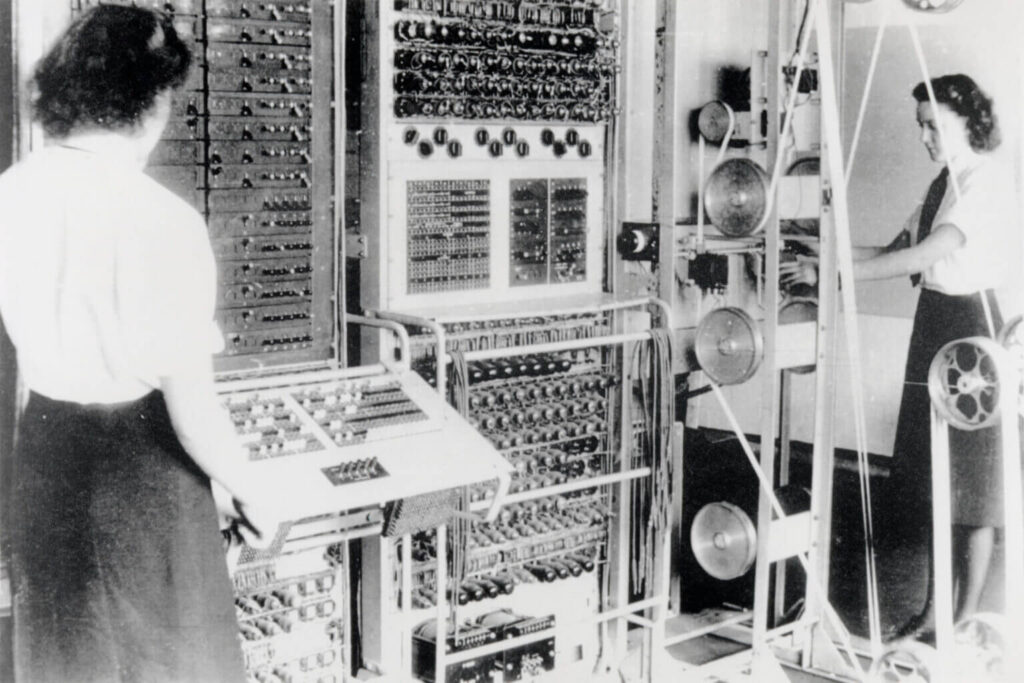
“Cathode Ray Tube Amusement Device”
As we have mentioned before, we all have a clear idea of what a video game is, but it is difficult to define it strictly. For example: Is a screen necessary? And the graphics? Questions as simple as these are difficult to answer, no one would hesitate to call an interactive novel a video game, for example, an Super Nintendo, Game Boy or Nintendo DS, whose development is by voice recognition and the plot is narrated, that is, a video game for the blind in which the screen would be meaningless. Must a video game have been created for the purpose of entertainment to be considered a video game? Must it have developed? These are not easy-to-answer questions, to make it more difficult, over the years the new proposals and systems have expanded even more, if possible, our initial video game concept, a fact that makes it even more difficult to set the date and time of the first video game with a widespread consensus.
And having raised the corresponding questions in the previous paragraph, to make us think about what a video game is and is not, we come to the year 1947, where we find an interactive missile simulator developed and patented by Thomas T. Goldsmith and Estle Ray Mann, called with the “attractive” name of “Cathode Ray Tube Amusement Device”, quite a marketing boast. The patent was filed on January 25, 1947 in the United States and issued on December 14, 1948, number 2,455,992. The simulator was inspired by the radar screens of the 2nd World War, and despite having an analog technology instead of digital, it was the first device developed to be used in a CRT (cathode ray tube).
The player had an electron gun from the CRT that was theoretically used in a similar way to Tele-Sketch. The beam of the gun was focused on the screen representing the missile, which had to be controlled to hit the targets, which were “overlays” (templates with the targets already printed, think of the Magnavox Odyssey) superimposed on the screen, mechanically detecting the impacts. The cathode ray tube was connected to an oscilloscope, making it possible to control the angle and path of the light trails displayed on the oscilloscope itself. All this gave the effect of firing missiles at different targets and if it seemed easy, the circuits could vary the difficulty when aiming the electron gun.
Obviously, everything mentioned did not go beyond patent and was never commercialized, it was unfeasible in 1948 to carry out such a technological deployment outside a laboratory or university. What is clear is the vision that T. Goldsmith and Estle Ray Mann had, when it came to proposing to introduce leisure, entertainment and fun, as one more objective of the computers of the time. As we all know, they jumped 30 years.
If we talk about a video game as such, as you can see it is difficult to specify if this simulator can be defined as a video game (some would even call it the first sandbox). Although its operation is tremendously archaic, it coincides in some points with video games, although we must not forget that it was never released or even produced on a small scale. What is clear is that the missile simulator created by Thomas T. Goldsmith and Estle Ray Mann is a clear precedent for video games.
Ferranti Nimrod Digital Computer
On May 5, 1951 the “Nim” (as it is known) was presented to the world at the “Science Museum Festival of Britain Exhibition”. The Nim was the first computer specifically designed to play a game, the objective, as usual, was not to create an incipient video game industry based on gigantic computers for scientists or millionaires, what was intended to be achieved with the Nim was the acceptance (and astonishment) of normal people, who did not understand in many cases what they were used for and why their governments allocated so many resources to the investigation of these “devices”.
With Nim, the first steps of artificial intelligence were shown in a tangible and understandable way for any citizen, hence the success in choosing a game to surprise both ignorant scientists and politicians of the time. A computer created solely to win the human, the NIMROD, the man-machine conflict had only just begun.
The way to play against this “super computer” was simple, a table with rows of buttons that represented the chips, and the same number of lamps on the front of the computer doing the function that screens perform today, in this case, each light bulb turned on the computer represented a token.
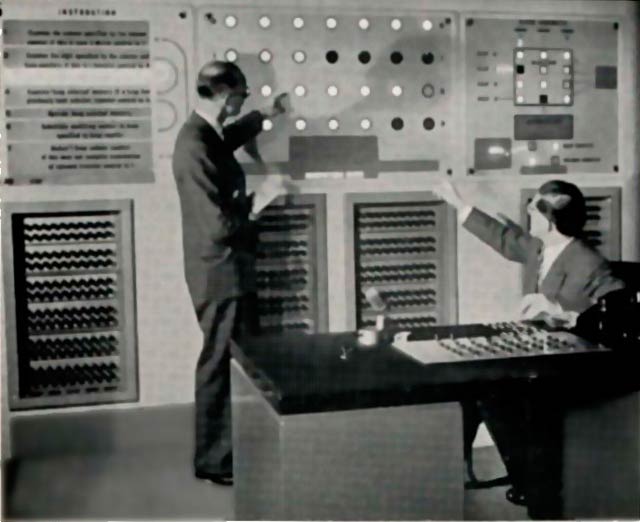
The chosen game (the Nim, hence the name of the computer), dates back centuries, from before the s. XVI there is already evidence that it was played, there are different variants but basically it can be summed up in a few rows of chips (similar to Connect 4, what memories…) with which two players must remove, in turns, a maximum of 3 chips (sticks or whatever you want to use) per row, being the loser the one who removes the last chip, if you have never played calmly, in Infoconsolas we did not know it either (but it sounded like a lot to us :).
The most important thing about the “Nim”, in terms of the history of video games, is that it was the first computer created solely for gaming, the great-great-grandfather of consoles and video games. There is no doubt that it can be described as a precursor, although as you can see it is still different from the concept we have of a video game, the lack of a screen makes it look more like an electronic game than a video game. Discussions aside, let’s see below something that is much more similar.
OXO
Well, from what we have seen so far there was life before Pong, after the different “approaches” we see something that from Infoconsolas we consider to be much closer to what we understand as a video game, the OXO.
Before talking about the game, it is necessary to talk about the machine, much more on a website like ours, where we normally give the same importance to hardware as to software, so let’s educate ourselves a bit:
In 1949, at the University of Cambridge (England) the EDSAC -Electronic Delay Storage Automatic Calculator – was put into operation, a computer created at the same university by Professor Sir Maurice Wilkes and his team, inspired by the EDVAC, previously created by John von Neumann’s. The EDSAC was one of the first British computers, on May 6, 1949 it ran its first program.
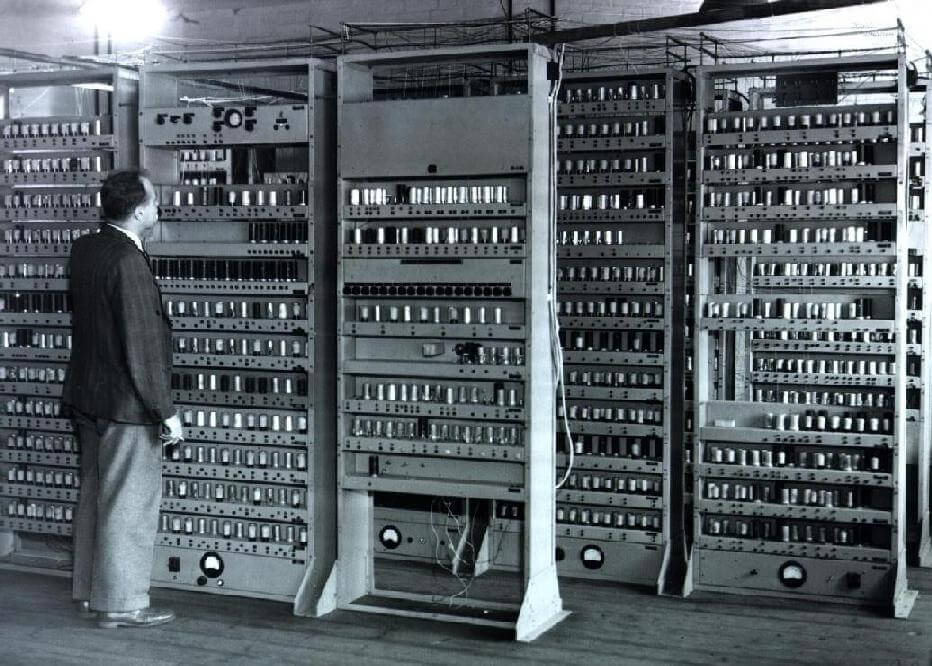
The EDSAC project was sponsored by J. Lyons & Co. Ltd., a British company that years later would receive the reward of commercializing the LEO I, based on the EDSAC design. As you can see in the photos, the dimensions of said machine were enormous and perhaps the word “computer” is more correct than “computer”, since the EDSAC was mainly dedicated to carrying out mathematical calculations of various kinds, exceeding by far in time and capacity of computing to humans. Computers like these helped expand our mathematical knowledge, performing operations that would otherwise have been impossible. In this way, the computers of the time advanced by hitting world mathematical records, such as discovering the longest prime number up to that date. In case anyone is wondering, the people who developed the EDSAC were part of the Cambridge Mathematics Laboratory.
This last fact is very common in those years, the people who created and worked with the first computers in history, were mainly mathematicians, scientists and engineers, in those years the computer science career simply did not exist since literally, computers and computers it was being invented in those same years, by themselves. Therefore, we are talking about students and workers who created giant computers from scratch, knowing perfectly how they work, to use them themselves as tools for work and research and opening a new path and technological industry.
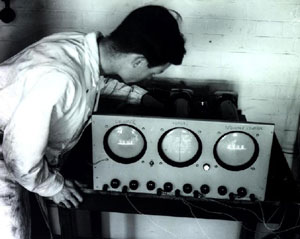
And once we have made up our minds about the machine (the EDSAC) and its surroundings, let’s move on to talking about the OXO. If the EDSAC is a clear reference, of indisputable importance in the history of computing, the OXO is its equivalent in the history of video games, there are different opinions on whether it can be considered a video game or not, the detractors mainly argue the lack of movement, we recommend that all of them get hold of a Spectrum (you can see that they started with the Play) and a tape of the magnificent “Original Adventure” game (by the way, it is an improved version of Adventure, an English adventure written ), if they find movement let us know.
We suppose that you can already imagine what we think in Infoconsolas, without the intention of underestimating other opinions (with better arguments than the previous example), many of which we think are totally subjective due to the illusion that video games started idyllically with a galactic battle or a tennis match, from Infoconsolas we present what, in our opinion, is the first video game in history: OXO.
The OXO is neither more nor less than the well-known and played by all “3 in a row”. In 1952 Alexander Sandy Douglas better known as “Sandy” (nothing to do with Greese) presented his thesis based on the interactivity between human beings and computers. Alexander S. studied at the University of Cambridge, where the EDSAC was created, in this way, in his thesis was the code of the first graphic game in history, as we know them today. The OXO ran only on the EDSAC, since it was programmed for that single computer, the code was short, but it fulfilled its objectives.
What we would call controls today was a dial marker, that is, a marker like the one on old wheel telephones, in which each number was a box from 1 to 9, the graphics were shown on a CRT like the ones you can see in the photo above in a resolution of 35 X 16 pixels. And well, it goes without saying that it consisted of beating the machine at 3 in a row…

In this way we have a machine, a “command”, a screen and the most important thing: A game… If we add all this, at Infoconsolas we have no doubt in deducing that Alexander S.’s OXO was the first video game of the history, if 3 in a row on a Spectrum, Amstrad, Dragon 32 or a current PC is considered a video game, why shouldn’t the same game on a computer made 40 or 50 years ago be?

The main problems that OXO has for not being considered as the first video game in history are several: The most important is ignorance, as it is a video game for a single computer, it was not as popular as other later video games and had an impact almost nil, as usual it was not commercialized and it took many years for the clear concept of videogames to exist and someone bothered to ask which was the first, on the other hand Alexander S. made the huge mistake of not patenting his idea and finally , the video games that came out in later years were much more spectacular than the OXO, being much more tempting for the media than a 3 in a row in a student thesis.
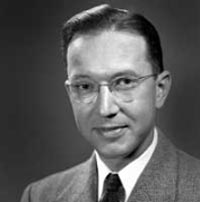
All this happened in 1952, but we still have a long way to go to see a coconut eater on our screens, so let’s continue with the beginnings of video games, but not before reminding you once again of the figure of Alexander Sandy Douglas, the one who since We consider Infoconsolas.com to have been the creator of the world’s first video game.
Tennis for Two
As we have seen, the OXO, even though it was the first video game in history, went practically unnoticed, turning out to be a flash of light that came on and went off shortly after the beginning of video games, instead of becoming a benchmark in on which subsequent generations were based.
Although in the age of the information society and the immediacy that we currently live in, this may seem illogical to us, in 1952 communication and the press were local/state, with the states and governments immersed in a race against the clock in which They took great care to reveal according to what technological advances. It was the time of technological espionage and the cold war, a few years in which the rulers spent huge amounts of public resources, to position themselves in an advantageous situation before the enemy in the face of the next armed conflict (the two axes). Consequently, many technological advances were silenced and forgotten, but not the following:
The “Tennis for Two” arises in a similar way, although its recognition within the history of video games is much greater, whether considering it the great precedent of video games, the missing link or the first video game in history. Be that as it may, Tennis for Two has great importance in the history of video games, let’s put ourselves in a situation to understand what reasons led to the creation of such an important video game:
After the 2nd World War, North American citizens were dismayed by the capacity for mass destruction with which the United States had finished the war against Japan, that is, the atomic bomb. Being aware of the danger of such weapons, the result of the union between science and the military, everything nuclear and by association “science” suffers tremendous unpopularity among the North American population. Given these facts, the US government, aware of the loss of popularity that continuing to investigate in this direction may entail, and of the danger involved in abandoning such technology at the start of a cold war against the Russians, chooses to continue its investigations with a campaign media support for science, with the aim of turning the tables and obtaining the approval of the people with respect to scientific research of all kinds, including military applications, that is, the message was something like this: Science is our friend, scientists are cheerful and kind gentlemen, let’s support science and while we are here, let’s apply their advances to our weapons.
One of the measures taken to clean up the face of scientists is the creation of new “science fairs”, giving greater support to existing ones and open days in laboratories.
In these circumstances, William Higimbotham, a scientist from the Brookhaven National Laboratory, born on October 25, 1910 and responsible for the electronic components of the Manhattan Project (the creators of the first atomic bomb), devised in 1958 an entertainment for the hundreds of visitors who came the Brookhaven National Laboratory, the idea as you can guess is the Tennis for Two.

Tennis for Two is a game for two players that takes place on a tennis court (1 horizontal line as the ground and a short vertical line as the net), the objective is to return the ball using an archaic control with a push button and a wheel to calculate the angle of response, the incursion of the effect of gravity that weighs on the ball is striking, being at first glance much more realistic than the later Pong. The Tennis for Two was based on oscilloscope technology, using the oscilloscope as a display.
In this simple way, William Higimbotham had created what for many is the first video game in history (for us the second). Whether it is or not, the really important thing is that Tennis for Two, unlike the OXO, did gain great popularity: people who tried it or saw it in the laboratory itself or at “science fairs” were pleasantly surprised, they were knowing the friendlier side of science…
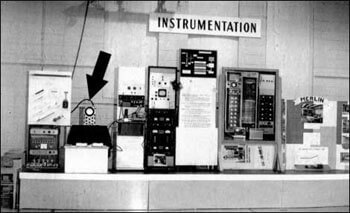
At last the concept of video games had reached the scientific community and citizens (to a lesser extent), for the first time an electronic game became popular and human-machine interaction with the sole objective of leisure became a way forward, small and narrow at first, but there was a new formula to be exploited, although it was only used mainly by scientists, the idea had crossed the walls of a laboratory.
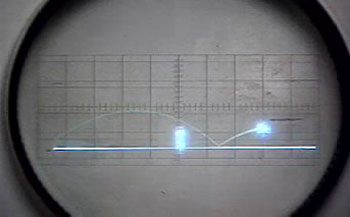
Despite the success of “Tennis for Two” based on its objective, that of entertaining visitors, William Higinbotham did not give it much importance and did not patent the idea, this fact has contributed to sowing more doubts in the controversial debate of the first story video game. For the members of Infoconsolas, whether there is a patent or not, and it uses the technology of a PowerPC or an oscilloscope, we have no doubt that “Tennis for Two” is indeed a video game. The theme is simple: a machine, 2 controllers, a screen and a game with really fluid movement… it’s a video game.
Once again the relationship between the army and videogames in the history of videogames has been made clear, the “Tennis for Two”, unlike the OXO as we mentioned at the beginning, was much more than a fleeting flash, it was a beacon that guided later visionaries in the possibilities of electronic entertainment, without a doubt, one of the most important video games in history. Before seeing how events unfolded after showing the way for their contemporaries, check out the “unique” operation of Tennis for Two in the video below.

Spacewar y PDP-1
As in the previous cases, with Spacewar there is also a discrepancy about whether it was the first video game in history, as you can see the opinions are very varied on this issue. What is clear is that over the years, we are getting much closer to the concept of the current video game, it was still in the 60s, but as usual, let’s get to know the machine first.
The PDP-1 (Programmed Data Processor-1), created in 1960 by Digital Equipment Corporation (DEC), was the first computer of an “economic” series so to speak, these computers had smaller measurements than their “big brothers”, being able to fit in a room of normal dimensions. Both factors facilitated the incursion of computers into universities and laboratories. As a curiosity, we must highlight the popularity that this computer has among hackers, since it was on it that the hacker culture was born in universities.
The PDP-1 had a memory equivalent to 9K expandable 144K, as a storage medium it used perforated tapes, as a data input peripheral it used a typewriter created and modified for the occasion by Soroban Engineering and for data output a brand new monitor CRT.
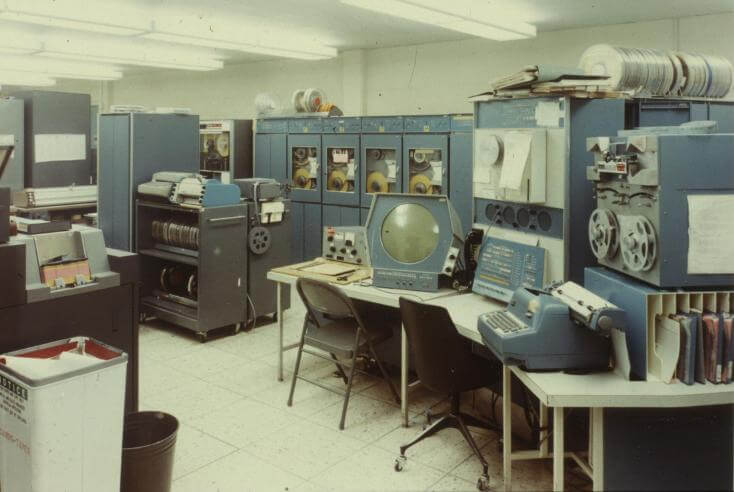
As you can see, the appearance is much more similar to current computers than the previous computers seen so far. A unit like the one you can see in the photo above was destined for MIT (Massachusetts Institute of Technology).
Following the arrival of the PDP-1 at MIT, Steve Russell, Martin Graetz, and Wayne Wiitanen, all of whom are at MIT and dedicated to researching unexpected applications of computing environments (i.e., hackers), conceived the idea of developing a game of space ships for the PDP-1. After a time of pause due to various problems, Steve Rusell begins to program the code with the support of different colleagues, in this way, after 200 hours of work, in February 1962 Steve Rusell finishes the first version of one of the games that most have influenced the history of video games, as well as one of the most versioned: The Spacewar.

- The Spacewar, consists of two spaceships called “Needle” and “Wedge” whose only mission is, as you can all guess, to destroy the opposing ship.
- The graphics are made up of vectors.
- The game is designed for 2 players.
- The movement is similar to that of the well-known Asteroids, a game created years later inspired by Spacewar.
- We have a limited number of missiles.
- To complicate the matter a little more, there is a star whose gravitational field drags us to it causing death, gravity is very present exerting a force greater than that of our reactors in case we get too close.
- To complete it, nothing better than the hyperspace function, with which you disappear and appear randomly anywhere on the stage, with the consequent danger of falling near the star.
- The typical OPTIONS already existed!! Not like today, but through the PDP-1’s control panel you could disable the star background, remove the star, play without gravity, or play with “space winds”, which made it much more difficult to move the ship.
This is basically the development of the original Spacewar, but little by little it was improved, markers were added, a “real” background of stars was created, based on constellations that moved slowly across the screen instead of being created randomly, etc, etc. … To this we must add the improvements made by students or researchers from other universities who also had a PDP-1 computer, since the Spacewar became very popular among computer science circles, a clear example is that DEC , the company that created the PDP series of computers, used it as a demonstration of the capabilities of the machine. Let’s see what the Spacewar was like on a PDP-1 and how this computer worked:

Despite the success of Spacewar within the university world, Steve Russell did not patent the idea, the computers of the time were too expensive and video games were still years away from becoming commercially viable. Spacewar, like Tennis for Two, enjoys multiple followers and admirers who claim that it is the first video game in history, Infoconsolas’ opinion is well known on this subject. The most relevant thing about Spacewar, in the history of consoles, was its great repercussion and dissemination, much higher than that of Tennis for Two, helping the evolution of video games like few games have done.
Late 60’s, the road splits in the history of video games
Thanks to the previous video games, thousands of university students, scientists and ordinary citizens discovered the still unexplored concept of video games, meanwhile technology continued its exponential evolution, with cheaper and smaller computers emerging year after year.
With this breeding ground, different visionaries mix between dates with the common idea of taking advantage of this new hobby. Video games, after many years of experimentation, went from being simple appearances in time and very geographically localized to a new social movement, a culture that has not stopped growing to this day.
From here, we will see video games from a different point of view, within the environment that has benefited them the most and has allowed them to be what they are today, we are talking about commercial video games within an industry and its corresponding market.
No matter how idealistic one may be, it is clear that without lucrative interests, video games would never be what they are today, simply because we would not have had hundreds of companies dedicating millions and millions of euros to telling us at all times how wonderful they are and how much you will enjoy with them.
In this way we can divide the history of video games into two well-differentiated eras:
- Non-industrial / Non-commercial: Its origins and first experiments. At this time the concept of video games was developing. Different types of hardware welcomed the first video games, developing a technological evolution that would pave the way for a single commercial hardware standard in the future, falling by their own weight into oblivion, the least suitable formats for video games. In these years video games owe their existence, evolution and expansion to scientific and military research.
- Industrial / Commercial: Video games become an industry, their evolution and existence is mainly due to profit motives. It is at this time that video games enjoy their peak and social impact, becoming over the years what they are today, one more part of our culture and society.
The “step” or transition that unites both eras is mainly a consequence of the technological evolution achieved in the 1960s, thanks to which it was possible to reduce the cost of hardware, making it possible to create new machines or use existing ones, only for mass entertainment in a profitable way. In other words, more plainly, years ago nobody would have invested millions of dollars in putting a machine destined to play at 10 cents a game, simply because the investment would not have been amortized in 50 years (for example).
Once the hardware became cheaper, different people had the same idea: Commercial development, to understand it in a simple way, is comparable to that of the cinema:
CINEMA
- Beginnings: Research and development. Inaccessible to the general public.
- Movie theaters: Marketing of 1 device to a multitude of people due to its high cost.
- TV: Marketing from 1 to 1, due to its low cost.
VIDEO GAME
- Beginnings: Research and development. Inaccessible to the general public.
- Recreational: Marketing of 1 device to a multitude of people, due to its high cost.
- Consoles / PC: Marketing from 1 to 1, due to its low cost.
As you can see, this industry that we criticize so many times for many different reasons is directly responsible for one of our greatest daily joys, video games. In the same way that we admire the first video game creators, we also owe the culture of video games to characters who had the great commercial vision of bringing video games to a mass public, this being an aspect of great importance, since even its commercialization, video games suffered the constant danger of being forgotten. From Infoconsolas we want to clarify that during the 1960s, different characters within the history of video games made both versions and new video games, that is, the video game movement was taking shape, little by little a movement that would explode in the 70’s.
We are talking about the first video game programmers properly speaking, some of them would go on to form part of history as founders of companies or commercial video game programmers, while many others would go into oblivion without any significance by not intending or being able to market the video games they created. , consequently having little relevance in the history of video games. It is impossible to remember or even be aware of all those anonymous people who, in a particular way, were making their first steps in this world, but as we have said, at this point in history, these characters lack relevance compared to the visionaries who trusted and they opted for the development of video games from a commercial point of view.
2nd Period: Commercial video games
Let’s see to whom we owe the great tribute of commercial video games, but not before reminding you that the order of appearance of the following video games corresponds to the date of release, since some prototypes were manufactured years before their launch.
Galaxy Game, the pioneers

In September 1971, what is known as the first video game arcade in history was installed at Stanford University, slightly ahead of the better-known Computer Space.
If we have highlighted “arcade video games” it is because the arcades themselves were not a new concept, arcade machines had existed for decades, but with a mechanical internal operation. In this way Bill Pitts and Hugh Tuck had the vision of creating an arcade machine based on a video game for commercial purposes, with the consequent computer inside it.
You have to get an idea of how difficult it was, in those years, without any precedent or standard hardware equipment (as the Jamma were later) to insert a previously modified computer of the time into an arcade machine, and of course, create the game yourself. The hardware was nothing more and nothing less than a Digital PDP-11/20, a much better version than the PDP-1 we talked about before. The video game created for the occasion, how could it be otherwise, was the Galaxy Game, a version of the previous Spacewar, which reaffirms its status as a “great benchmark”.
As you may have observed, so far we can emphasize three aspects which will help us to get an idea of the conditions of these pioneers in a few years of transition:
1º The precedents, and consequently, the possible references and influences were minimal, causing, as it happened, that the first commercial pioneers coincided in form and content with the same guidelines as a video game should be.
2º The exponential evolution of computer technology, in just 10 years we had gone from the PDP-1 to the PDP-11/20 (the /20 means version of the PDP-11).
3º Boys and girls, you have to study… The environment for creating everything related to video games was kept in the universities, these being the ones that would give way to their commercialization, for the enjoyment of the rest of humanity, but beware , enjoyment is not the same as creation/commercialization, with the first you spend, with the second you earn 🙂
Let’s continue… The Galaxy Game cost 20,000 dollars at the time, and games in this version of Spacewar cost 10 cents a game and 25 cents 3 games, the initial name was Galaxy War, but in those years the war was not very good sight (Vietnam and the hippie movement), and less on a university campus, so they had enough sight to change the name to Galaxy Game, much more “modosito”. In a short time it became very popular on campus and in May 1972, once the success of the first version was seen, a second version was made, with 4 booths, with the aim of amortizing costs, the machine was installed in the cafeteria of the university until 1979.
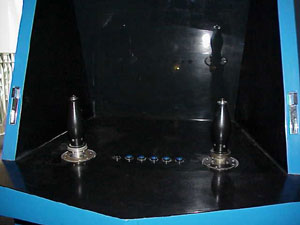
The Galaxy Games were disassembled and sold for parts, a Galaxy Game was not seen again until 1997, when they were restored, they are currently in the Computer History Museum. The Galaxy Game was the first arcade video game in history, as we know it, but they were limited to making a few units located in the same place without further exploration or business vision, let’s see below something a little more commercial.
Computer Space

Little by little we are advancing, the Computer Space, the second arcade video game in history is, how could it be otherwise, also considered by many to be the first video game in history. At this point, we do not need to give more explanations about a question that has already been resolved, but we are getting closer to the generation of video games known to all, no matter how little you know the history of video games, it is easy for you to have seen or read in some occasion information related to Computer Space, mainly because it is part of the history of one of the greatest companies of all time, ATARI.
Nolan Bushnell, the first video game entrepreneur in history, is the main person in charge of Computer Space, born in 1943, he graduated in electronic engineering. Nolan Bushnell was also one of the lucky ones who had the opportunity to try Space War, from that moment becoming fond of the still “virgin” world of video games. He made different versions of video games already made like 3 in a row and created new ones like Fox and Geese.

Unlike most of the characters seen so far, Nolan Bushnell was confident in the possibility of opening a new market, the video game market. This is how from 1969, he begins to work at Ampex, where together with his co-worker Ted Dabney, they begin to work in their spare time on what would become Computer Space.
Unlike the previous cases, and mainly, the Galaxy Game, Nolan Bushnell focused on creating specific hardware for video games, greatly reducing production costs: instead of introducing an expensive computer of the time previously modified in a cabinet, Nolan he laid the foundations for the arcade machine industry, manufacturing hardware dedicated exclusively to running his video game, no more, no less. The game in question is an “improved” version (it’s hard to improve on a classic) of Steve Russell’s SpaceWar. In Computer Space the star was eliminated and UFOs controlled by the machine were placed.
Once they had completed the project, they needed someone willing to market their new product, the company that accepted the challenge was Nutting Associates, a company founded by Bill Nutting in 1968. This company was not going through a good economic time, dedicated to the manufacture of mechanical arcade games, he opted for Nolan Bushnell’s idea of introducing a video game in one of his arcade games. The initial production of Computer Space would be 1,500 units.
Before continuing with Computer Space, let’s see what it was really like:
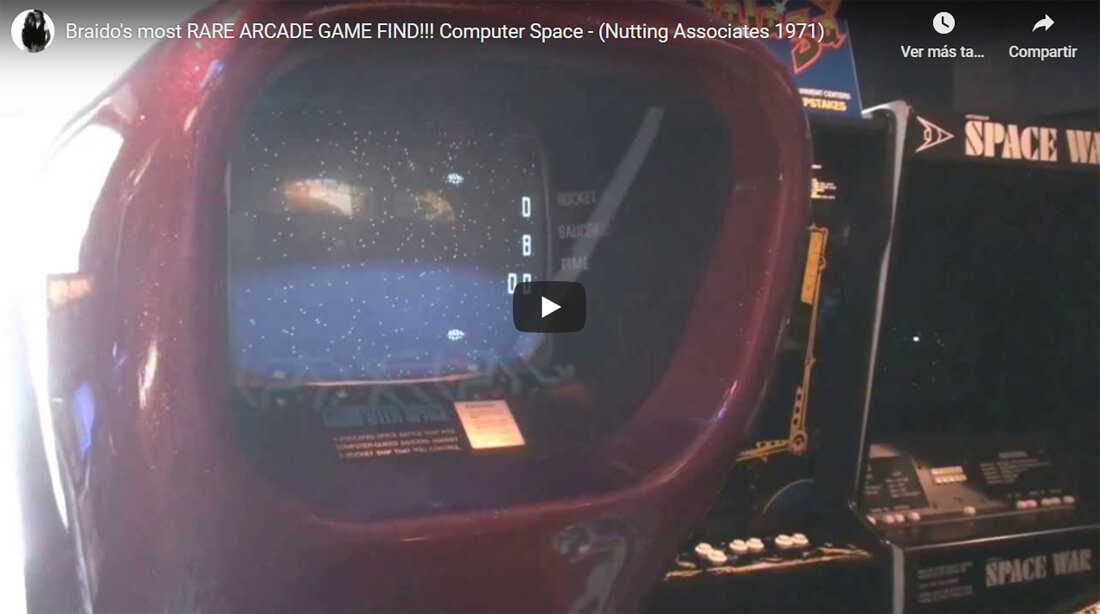
Closed the agreement with Nutting Associates, this is how in November 1971, shortly after the Galaxy Game, Computer Space was launched on the market, being the first mass distribution of a video game, and creating the market model that many companies would follow in years later: The distribution of video games in such everyday places as a bar or a cafeteria, through arcade machines. For the first time, video games were within the reach of most people, geographically close, of course.
As you can see below, the futuristic design of the arcade games is priceless. Different models were designed with even more tacky colors. In spite of everything, few material objects can have more value for a console or video game collector than these beauties.

Without being a failure, Computer Space did not do very well, the main reason was its controls, too difficult for the time, the machine included instructions, but… Has anyone ever read the instructions of an arcade? On the other hand, the video game itself was too complicated to be a first experience and contact with video games for the general public:
As we have already mentioned, until the “commercial era” of video games, their environment was certain universities and laboratories, these centers had been in contact with video games for years, an example being the versions of Spacewar that circulated between universities. The creation of Nolan Bushnell, that is to say, the Computer Space, intended that a mass public, ordinary people who had never seen a video game, would arrive at a bar and start playing with something they did not know, and that in turn was the same or more evolved than the video games that circulated through the universities and laboratories themselves, with the aggravating factor of a complex control system. As you can imagine, things could not go very well.
Nolan Bushnell had been ahead of his time but he had erred, he had created a video game based on his own experience, instead of putting himself in the consumer’s point of view. Let us remember that Nolan Bushnell did not have the objective of creating the best or the most advanced video game, what he wanted was to create the most profitable, the one that would provide him with the most benefits.
Despite the limited success, with Computer Space, Nolan Bushnell learned 2 valuable lessons:
- The possibilities of the video game market were real.
- It was necessary to change the focus, you couldn’t launch a product focused on or based on people who had already had contact with video games. Something simpler, simpler, had to be created, gradually teaching the general public the great potential of video games.
And here we leave Nolan Bushnell for the moment, with a Computer Space that did not turn out to be the success he expected, a Bill Nutting who decided not to continue manufacturing it, and a valuable lesson, which he was about to put into practice. Soon in other articles we will continue with the adventures and misadventures of the young Nolan Bushnell and his faithful companion Ted Dabney in the founding of Atari, but now it is time for one of the characters that we at Infoconsolas consider to have the same or greater weight than Nolan Bushnell , said character is neither more nor less than…
“Ralph H. Baer, the father of video games”
Before bonfires burn in the networks against us, we want to emphasize that the title is in quotes, that is, it is not a resounding statement, it is just the most widespread way in which this man is known, a person of great importance in the history of video games, Mr. Ralph H. Baer.
Calm down the spirits of the fervent and faithful followers of Mr. Nolan Busnell and Atari, let’s see who was that character who is known as “the father of video games”:
Born on March 8, 1922 in Germany, he escaped the Nazi movement by emigrating to the United States in 1938 and graduated from the “National Radio Institute” in 1940. In 1943 he was called up to serve in the United States Army, joining part in the American intelligence department, his studies and the German language as a mother tongue helped him to enter this department.
After the war he graduated from the “American Television Institute of Technology” with honors, as a television engineer (Chicago 1949). He was working in different companies until in 1958 he joined Sanders Associates. Like many of his contemporaries, Ralph H. Baer was linked directly or indirectly with the army, since many of the companies in which he worked had commercial agreements with the army or were part of it, such as the Sander Associates itself.
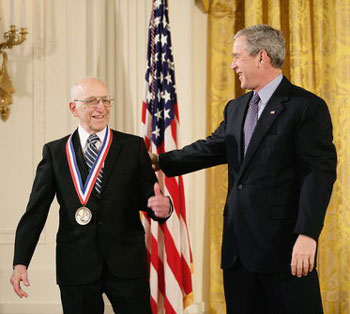
In 1966 Ralph Baer was already the director of the Equipment Design Division of Sanders Associates Inc, with 500 workers under him. In those years in the United States there were about 40 million televisions, dedicated exclusively to broadcasting routine programming. Ralph H. Baer, thanks to his great work experience, was convinced that all those televisions could have more functions than the simple fact of emitting a signal.
Already in 1955 Ralph Baer had proposed to create a TV set that could be played with to differentiate it from the rest of the competition’s televisions, the initial concept was that the television had a games channel, unfortunately the idea was rejected by his superiors . It took 11 years, exactly until August 1966, while he was waiting for the bus, for Ralph Baer to return to that idea, which had spontaneously sprung from his head and captured on a ring-bound notebook, to pass them on the next day, September 1. in 1966, he cleaned up in his New Hampshire office, thus forming a multi-page document outlining the idea of playing games at home through the television, one of the earliest definitions of a video game.
Thus begins one of the most important projects in the history of videogames, at Infoconsolas.com we wanted to link the brief biography of Ralph H. Baer with the beginning of one of his greatest inventions, our intention is none other than to convey to you in a way realistically, the naturalness with which these types of ideas sometimes arise, in the day-to-day of some people who, either because of their academic training, work preparation or because of their “vision” and destiny, manage to have their name become part of part the story. Let us now continue with Mr. Ralph Baer, but focusing on his wonderful invention.
The idea that Ralph Baer had in mind was to create a “box of games”, in his annotations he already included concepts such as action games, sports games, board games… The term “video game” would not appear until the mid-70s ‘, although in his annotations he already used the term “TV Games”. That box should have a cost for the consumer of about 25 dollars, so that it would be accessible to the majority of the population.
In this way Ralph Baer began with the creation of what would be and was, the first console in history. Few people in the world had better resources than Ralph H. Baer to carry out his idea, with 500 people at his service, he assigned the project to a small group in which Bill Harrison and Bill Rusch stand out. During the following years, the project evolved in different phases, mainly improving hardware aspects and including what would be the first peripheral in history for a console, the light gun, so fashionable in later years and still present today in stores. latest generation consoles.
Within a few years, in 1968, they had developed a product that met their expectations, a console with which 2 people could play different games, all of them extremely simple, but innovative for their time. That first console was called “Brown Box “, as you can see in the photo below, it is not necessary to explain the reason for its name.
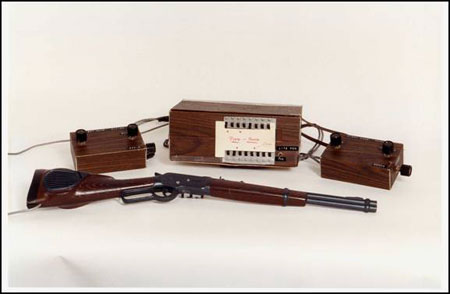
With the product already finished, it was only necessary to find someone who was willing to market it, the first companies they approached were the TV companies, but these withdrew from the negotiation due to the great crisis that the sector was suffering. . They then showed their product to TV manufacturers such as RCA, Sylvania, GE, and Motorola, but it was Magnavox that went for the “Brown Box.” Magnavox bought the license in 1971 and in 1972 it launched what would be the first video game console, the Magnavox Odyssey.

The Magnavox Odyssey had multiple games, all of them extremely simple compared to what we have today, the most popular without a doubt was Table Tennis, known to all as Pong (slightly different from the later Atari). The Magnavox Odyssey, being the first video game console, stands out from the rest in different aspects, both positive and negative:
- It included game cards, which were cards with circuits, that is, without any memory.
- It did not have a processor or memory, it was made up of technology prior to them and made up of circuits, transistors, capacitors…
- Due to its limited hardware, the console was accompanied by different accessories such as Monopoly-type tickets, tokens, cards, etc… Although what most catches our attention in Infoconsolas are the plastic sheets that were placed on the screen of the console. television depending on the game you played (overlays), “improving” the graphics of the console in a fairly reliable way.
The Magnavox Odyssey was a remarkable success and opened a new market, that of home consoles, initially launched in the United States, in subsequent years it crossed its borders to reach Japan and some European countries. Multiple versions of the console were made by Magnavox, below you can see a promotional video of the Magnavox Odyssey in all its splendor:
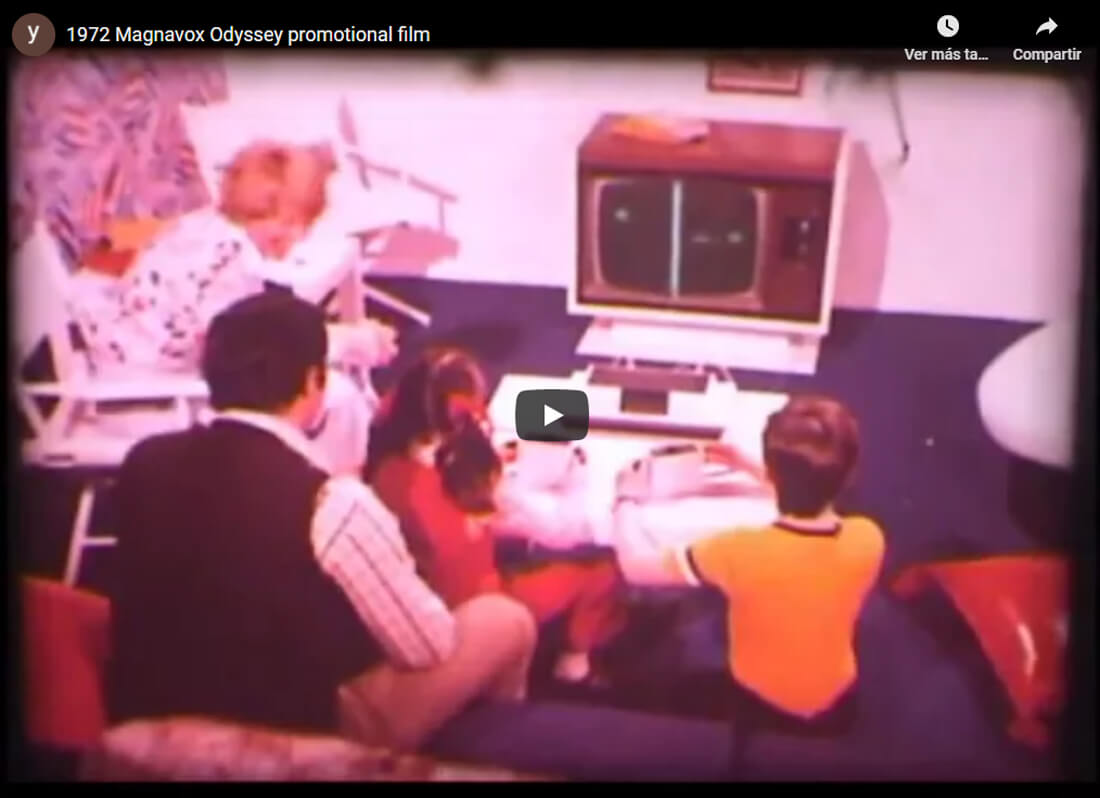
Regarding Ralph H. Baer, we cannot forget to tell you why he is considered the “father of video games”, contrary to what many people think, it is not only because he is the creator of the first video game console in history, but for the fact of having the video game patent. During the following years Ralph H. Baer, along with Magnavox and Sanders, had numerous confrontations in court with companies like Atari (mainly), for its famous Pong (alleged copy of Magnavox’s Table Tennis), as well as with Nintendo and others. In all cases, the judges ruled in favor of Mr. Ralph H. Baer.
We could extend much more with the Magnavox Odyssey, the first console in history deserves it, its creator and the legal actions, the patents, which are really curious… But we believe that with what has been said so far you can make a Enough general idea about the Magnavox Odyssey.
So far we have seen the beginnings of video games, from their origins in the mid-20th century, through missile simulators, the NIM and the OXO, to the first arcade games and home consoles.
This has been the history of the beginnings of video games, from here the course of video games was transformed until it became the great industry that we currently enjoy, a long time has passed since then, but the end of video games continues being the same, amuse all his followers. Let’s take a few seconds to think about all those people who, whether aware or not, made it possible for us today to enjoy an entire industry designed to offer us fun and entertainment, forming and apart from our societies and cultures. As we usually say in Infoconsolas (we are very retro), to value the present you have to know the past…
If you have come this far and you want more, we invite you to continue with the following article: The first generation of video game consoles. I’m sure you like it. oh! And don’t forget to subscribe to our 100% RETRO Twitter feeds, which we put a lot of care into and you’ll also love: Infoconsolas Twitter.
FAQ History of video games, the beginnings
The OXO, in 1952.
Alexander Sandy Douglas, with his OXO from 1952.
Mainly in the United States and Great Britain, in the context of the Cold War.
Ralph H. Baer, born March 8, 1922 in Germany.
Because he was the one who patented the video game concept.
Ralph H. Baer, with his Brown Box in 1968, the Magnavox Odyssey of 1971.
The first arcade machine was the Galaxy Game.
The second arcade arcade was the Computer Space.
Nolan Bushnell, later founder of Atari.
Computer Space.
Spacewar, distributed among universities and laboratories.
The Missile Simulator by Thomas T. Goldsmith and Estle Ray Mann.
The Great History of Video Games, by Steven L. Kent, NOVA Publishing.
Oxo, Tennis for Two and SpaceWar.
You can print this article in PDF format.

